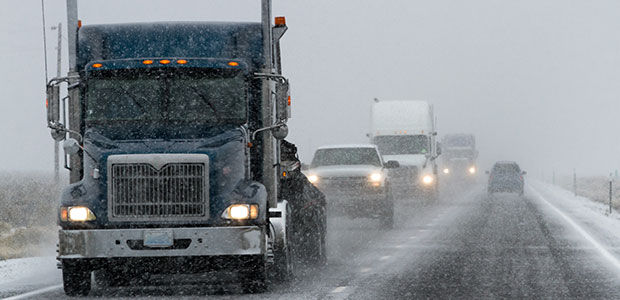
8 Festive Period Travel Tips for Employees
Statistics show that drivers are 20 percent more likely to be involved in an accident at this time of the year. So, with this in mind, we’ve put together this actionable list of festive period travel tips for employees.
- By John Leo Post
- Dec 19, 2019
Fleet managers up and down the country will be all too aware of the increase in road traffic accidents during the winter months. In fact, statistics show that drivers are 20 percent more likely to be involved in an accident at this time of the year. This, plus the fact that in the US, 25 percent of work-related deaths were due to traffic accidents, illustrates the importance of properly educating all drivers in the workplace. So, with this in mind, we’ve put together this actionable list of festive period travel tips for employees.
Carry out Vehicle Checks
In addition to ensuring all company vehicles are regularly serviced, it’s a good idea to conduct frequent in-house checks, especially during the colder months. These should ideally be carried out by fleet managers as much as possible; however, if this is not an option, all drivers should be educated on what to check and how. Your checklist should include:
- Tyres—pressure and tread depth. Winter tyres might need to be provided in some cases
- Windscreen—there should be plenty of screenwash, and wipers must be in good working order
- Antifreeze—in very cold weather, antifreeze should be added to the vehicle’s cooling system
- Lights—make sure all lights, including fog lights, have working bulbs
- Brakes—check brakes work properly and that there is enough brake fluid
- Oil—check the oil level to make sure there is plenty
Check the Routes
Employees should be told to check their driving routes, especially during winter. At this time of year road closures and slow traffic is more likely, and familiar routes may no longer be the best ones. Before embarking on a journey, and on journey breaks, drivers should seek live traffic information in order to best plan their drive.
Check the Weather Ahead
Long distance drivers in particular should be encouraged to get into the practice of checking the weather ahead. Those who drive cross-country will likely encounter diverse weather conditions, with some areas being prone to flooding and others known for heavy snowfall and icy roads.
Keep an Emergency Kit in the Vehicle
All company vehicles should be stocked with an emergency kit full of items that will be useful in the event of an incident, break down, or being stuck. Ideas for what to include are:
- A Hi-Vis
- Emergency warning triangle
- First Aid kit
- Road map
- Blanket
- Sunglasses
- Torch
- Jump lead
- Shovel
- Snacks and water
Practice Patience
Fleet managers should reiterate the importance of taking extra care while driving in poor weather conditions. This includes the need to be patient with other drivers and travel at a slower pace in general. Stopping distances in bad weather can be up to 10 times longer than normal, so it’s imperative that drivers keep plenty of space between themselves and the vehicle ahead.
Having said this, in the event of a blizzard, drivers should try to maintain visibility of the next vehicle—even if it’s just their lights—in order to keep to the road.
Avoid Alcohol
It’s likely that the company policy will already stipulate rules surrounding alcohol; however, this is worth reiterating at this time of year. Christmas party season always sees an increase in drink-driving convictions, and according to the US National Institute on Alcohol Abuse and Alcoholism, drink-drivers are involved in 40 percent of all traffic deaths over Christmas and New Year’s. Fleet managers should use this opportunity to remind drivers about the dangers of drink-driving, and the effect such an action could have both on their physical safety and the safety of their job.
Winter Driving Training
In companies where drivers must regularly travel in poor conditions, or there is any driving in extreme weather, it’s worth conducting comprehensive winter driving training. In addition to the aforementioned tips, there are practical driving courses that can be taken across the country in which drivers can learn how to deal with real situations.
Implement a Personal Safety Policy
Good practice dictates that companies with a fleet should put a policy in place which details not only how to keep safe while driving, but also what to do in the event of an incident. Safety is paramount, so if an incident occurs, drivers should stop, turn off the engine, and turn on their hazard flashers.
If there are injuries or the road is blocked, emergency services should be contacted immediately. A workplace driving safety policy should also inform employees of how to report the incident to the Fleet Manager, and/or their immediate Line Manager. Make the process clear, and provide any phone numbers that drivers might need on a card in each vehicle (insurance company number, recovery company number, and the Fleet Manager’s number).
It’s important for workplaces to offer drivers all the tools they need to travel safely, from knowledge and understanding to tangible equipment. Fleet Managers have a responsibility to make sure that their team is well-aware of the challenges that could come with driving in bad weather, and to provide all the relevant training to help them avoid problems.
The article was produced in collaboration with Keith Michaels, market leader in specialist and modified car insurance with over 25 years’ experience.